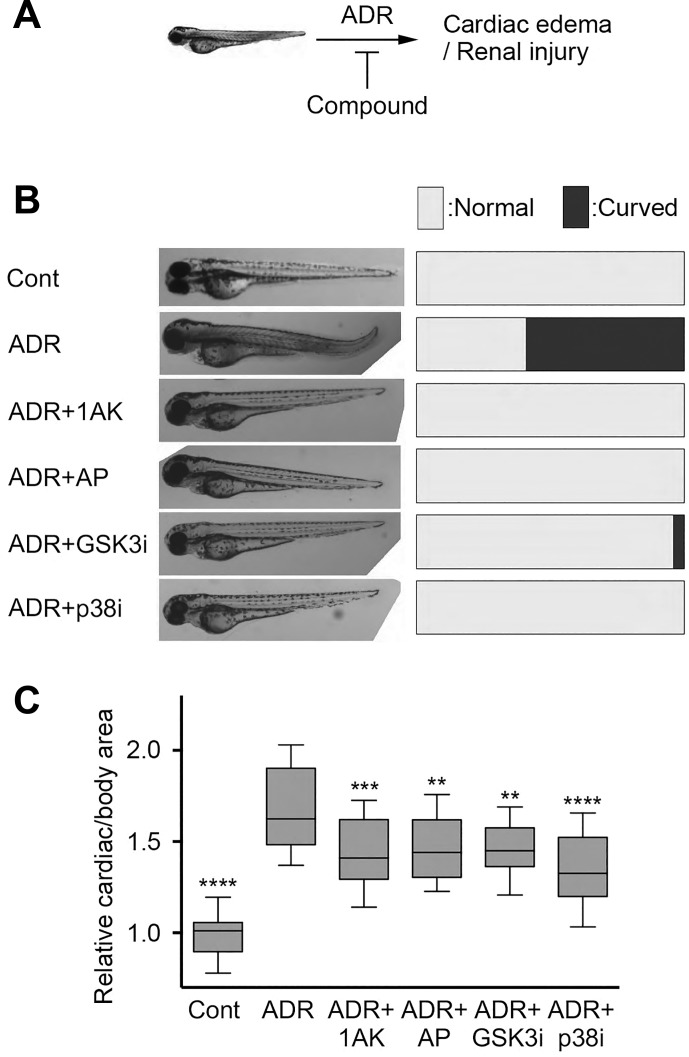Fig. 7.
Alsterpaullone reduces pericardial edema and glomerular injury in zebrafish. A: schematic representation of the zebrafish embryo-based in vivo assay to test efficacy of the novel compounds. Adriamycin (ADR) treatment induces pericardial edema and renal injury in zebrafish embryos, which can be studied by examining body curvature and the size of cardiac region. Compounds that protect renal function reduce the in vivo damage as defined by these measurements. B–C: representative images (left) and graphs showing quantification of level of body curvature (B) and edema (C) in zebrafish embryos treated as described in materials and methods. Control animals (Cont) were kept in the E3 media. Glomerular injury was induced by treatment with ADR, which resulted in significant increase in body curvature and edema (expressed as a ratio of the cardiac area over total body area). Treatment with alsterpaullone (0.25 µM), 1-azakenpaullone (0.25 µM), GSK3 inhibitor SB216763 (0.5 µM), or p38 inhibitor SB203580 (1 µM) reduced body curvature and edema/cardiac area per body area. Graph in B presents relative number of embryos displaying normal vs. curved bodies in each treatment group (n = 18–36/group). Graph in C shows 10–90 percentiles per treatment group, with mean and 95% confidence interval in the graph (n = 18–36/group). One-way ANOVA with Dunnett’s multiple comparison test was used. **P < 0.01; ***P < 0.005; ****P < 0.001.

